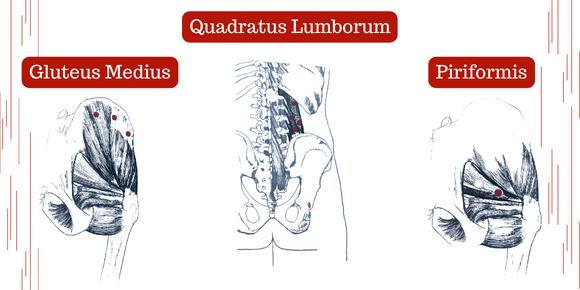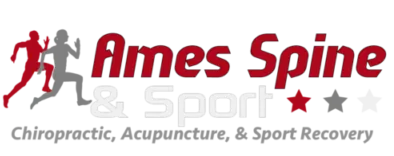
Did you know…?
96.7% of patients with non-specific lower back pain in a study showed to have no “objective findings” on physical examination, but displayed active trigger points? And when the patient was treated with trigger point releases, the patient displayed a reduction in symptoms by an average of 75%. This is why we find myofascial and trigger point release work to be a crucial part of your treatment plan here at Ames Spine & Sport.
With lower back pain patients, we check for active trigger points in the gluteals, quadratus lumborum, piriformis, iliopsoas, rectus abdominus, multifid and more!
Here are 3 quick trigger points that may provide you with some relief if you find yourself struggling with lower back pain:
- Quadratus lumborum
- Pain follows the iliac crest, SI joint region, and groin
- Pain is described as a deep aching pain at rest, “excruciating” upright, and sharp (knife-like)
- This can be activated by: car accidents, awkward lifting, stooping while twisting, putting pants on while standing, gardening, walk/running on slanted surfaces, sleeping in softer beds, and lower limb length discrepancies
- Gluteus Medius
- Pain is in the lower back near sacral, gluteal and SI joint regions
- Pain worsens with walking and makes it difficult to sleep on affected side
- This can be activated by: running, sudden falls, standing on 1 foot, walking/running in sand or softer surfaces, true SI joint dysfunctions and sitting on wallets
- Piriformis
- Pain is referred to the SI joint or hip
- Piriformis syndrome is caused by tension in the piriformis muscle that compresses on the Sciatic nerve, resulting in sciatic symptoms (radiating pain, numbness, tingling down the leg to the foot)
- This can be activated by: true SI joint dysfunctions, twisting with a bend/lift, running, impact trauma and car accidents, chronic pelvic inflammatory conditions, and hip replacements.
Next time you are looking for some at home lower back pain relief, try using a lacrosse ball, rad roller, or theracane to help relief these trigger points! Many patients will find relief by releasing the trigger points then strengthening to prevent relapses.
